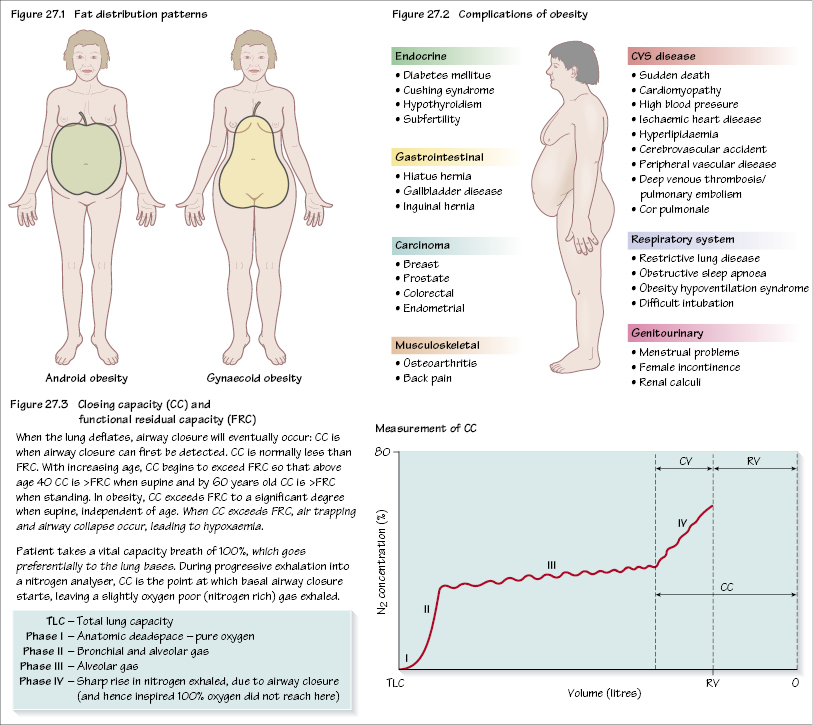27
Anaesthesia and obesity

Obesity (obesus (Latin) = fattened by eating) is a major health problem. Virtually unheard of at the end of the Second World War, it is now a national epidemic. Although multifactorial, a diet high in fat and refined sugars, combined with low levels of activity, have contributed to its increase. Less common causes include endocrine disorders (e.g. Cushing disease and hypothyroidism). There is also a genetic component; adoption studies have shown a 70% chance of obesity if both parents are obese compared to 20% in those of normal weight.
In 2010, 26% of adults (>16 years old) in the UK were classified as obese and 30% of children (2–15 years) were overweight or obese.
Fat distribution
Centripetal (android) obesity (Figure 27.1) confers added risk of developing ischaemic heart disease, glucose intolerance, Type 2 diabetes, dyslipidaemias, CVS disease, LV dysfunction and CVA. This is possibly due to products of visceral fat delivered directly to the portal circulation.
In peripheral (gynaecoid) obesity (Figure 27.1) fat accumulates on hips, buttocks and thighs. This is more common in women and confers some protection from conditions such as diabetes and ischaemic heart disease.
The complications of obesity affect all physiological systems (Figure 27.2). Obese patients have increased morbidity and mortality from anaesthesia and surgery.
Respiratory system
Stay updated, free dental videos. Join our Telegram channel

VIDEdental - Online dental courses


